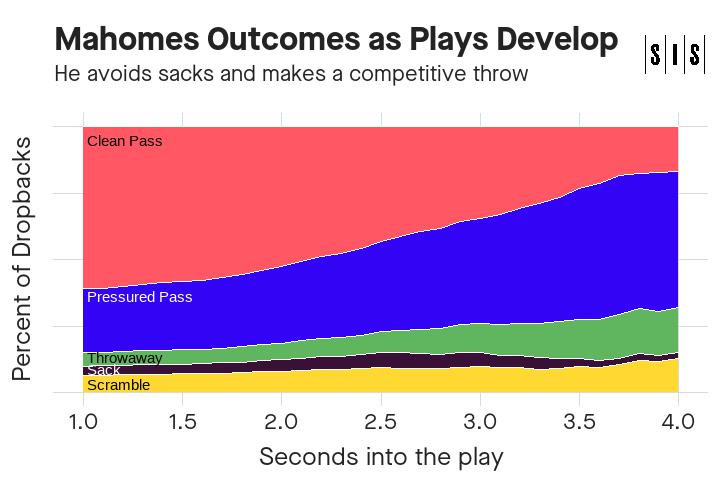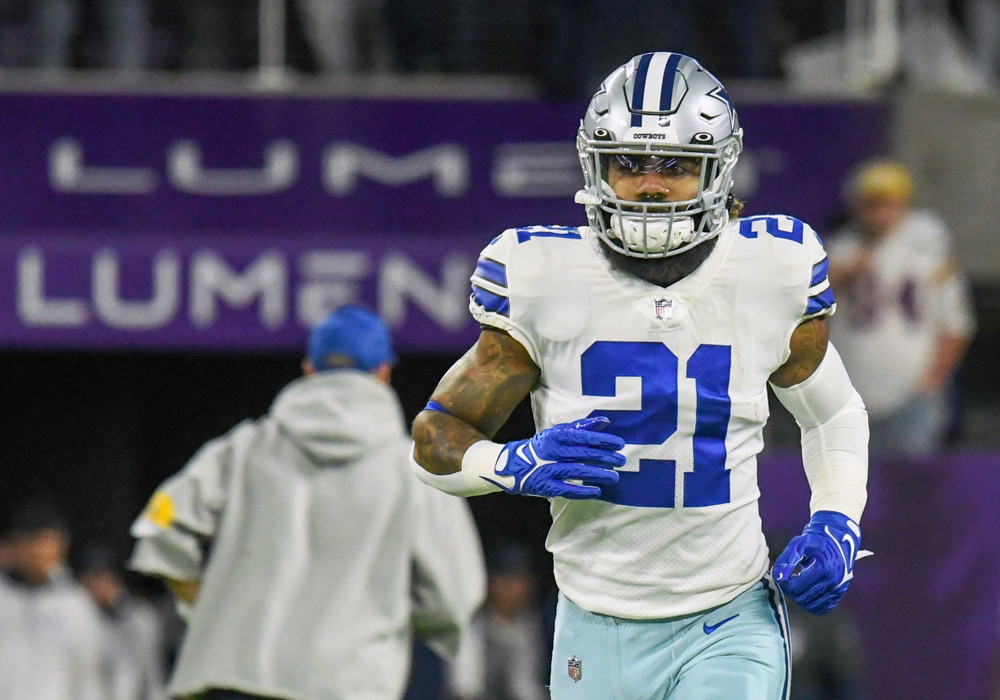This matchup of Patrick Mahomes and Jalen Hurts could serve to highlight the value of special talent at quarterback, if you were inclined to make grand proclamations based on one game.
Mahomes brings unbelievable throwing ability from all kinds of platforms, while Hurts brings physicality and athleticism. Both can extend plays with their legs (health permitting), but they make very different decisions when they do that.
Setting a Baseline
First off: these guys were the top two MVP candidates this year, so let’s give them credit for what they were able to do overall.
Patrick Mahomes and Jalen Hurts Ranks in 2022
| Mahomes | Hurts | |
| Independent QB Rating | 1st | 2nd |
| Passing Total Points | 1st | 5th |
| Total Points | 1st | 4th |
(Suffice it to say, my position is that Mahomes deserves the MVP this year).
Mahomes is the better passer, but he should also get credit even when compared to Hurts for his rushing contributions. He was 5th in the NFL in Total Points from scrambles, barely edging out Hurts in both volume and efficiency.
This isn’t a discussion about who the better player is overall, because I’d argue there isn’t a discussion to be had. But these guys present an interesting case study in contrasting skills and styles that each got them to the mountaintop. And when we’re looking at players’ splits, it’s important to keep in mind what baseline we’re working from.
What Happens When Plays Get Long
At SIS we track how long it takes for a pass play to develop into whatever it’s going to develop into (i.e. a pass, scramble, or sack). That allows us to empirically confirm the statement I made earlier about both Mahomes and Hurts being able to extend plays.
They’re each among the top 10 highest in Snap-to-Throw +/-, which takes each passer’s times and compares them to the average for similar dropbacks. A high number means they take more time to get the ball out than you’d expect on average. (Hurts’ distribution is a little skewed because there are so many RPOs in the Eagles offense. He has a lot of quick throws that are counterbalanced by very long plays.)
Getting the ball out quickly is a desirable thing in general, because it means you’re more likely to be staying within the play design and less likely to end up on your back. And the good news for both of these guys is that they’re 1-2 in the NFL in Total Points per play when either the pass, sack, or scramble occurs before the average time of a throw for that drop type.
When the play extends beyond what we’d expect—typically three seconds or more—these two have different results. Hurts was seven points per 60 plays worse than Mahomes when he held onto the ball. (And while the expectation I’m using is based on when the throw should come out, I am including all dropbacks in the evaluation of what happens on those plays.)
Total Points per 60 Plays by Dropback Time, 2022
| Faster than Expected | Slower than Expected | |
| Mahomes | 17 (2nd) | 17 (2nd) |
| Hurts | 18 (1st) | 10 (12th) |
We can look at this a little differently by breaking out the kinds of plays that result from a play taking longer than a couple seconds. Here is a breakdown of how often each of several different results come out of a Mahomes or Hurts dropback, assessed every tenth of a second. Think of it as, “After X seconds into a play, how likely is Y outcome?”

So what can we learn from this?
First off, Mahomes is getting off a competitive throw (i.e. not thrown away) just under three-quarters of the time even on plays that extend beyond four seconds. That’s pretty impressive, especially considering he ranked second in the NFL in Independent Quarterback Rating (IQR) under pressure.
But it’s also important that he’s avoiding sacks. Remember, this plot is saying how often a given result occurs after that point in the play. So when the Sack band thins out after three seconds, that means he’s taking most of his sacks relatively early (likely because of blown blocks) and is avoiding them late in the play.
Let’s take a look at Jalen Hurts for comparison.

The right side of this plot looks a lot different than that of Mahomes. As discussed above, both Hurts and Mahomes are pretty consistent scramblers, although Hurts seems to duck and run a little earlier. But when the play extends towards four seconds, Hurts is taking a sack or throwing the ball away half the time, which is way more often than Mahomes. And once the play gets to four seconds or more, all five of these outcomes are similarly likely.
The “good news” is that Hurts isn’t making throws under pressure nearly as often, which we know to be a bad proposition in general. And this year, Hurts was in the middle of the pack in terms of IQR under pressure, so he’d like to avoid those plays if possible. The trouble is that those sacks can be killers.
How Does Mahomes’ Injury Affect This?
Two weeks of rest should do wonders for Mahomes’ injured ankle, but if we assume he’s still a bit hampered, it stands to reason that we might expect a different look from him and the Chiefs if he’s not expected to be as effective in escaping the pass rush.
Oddly, Mahomes has had fewer short drops, RPOs, and screens (57%) than he did in the regular season (64%), so they’re not trying to get the ball out quicker. He has been sacked just as often as well.
He is throwing a bit less from off-platform (32%) compared to the regular season (39%), possibly a result of trying to avoid putting pressure on the ankle. Not that it matters—he has completed 20 of 23 passes for 213 yards and 3 touchdowns without his feet planted in the last two weeks. So we probably needn’t worry.

